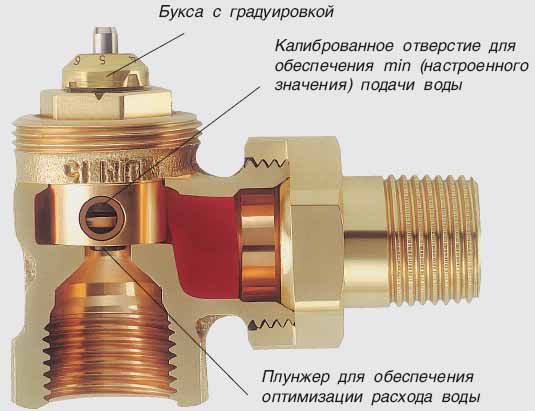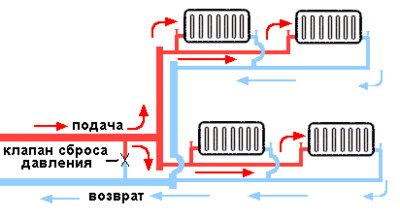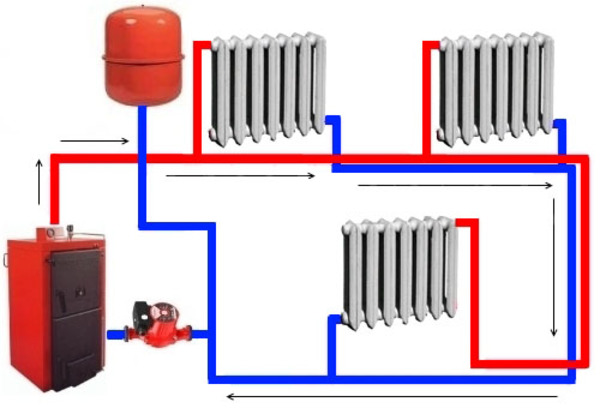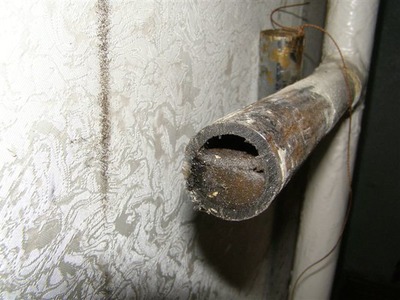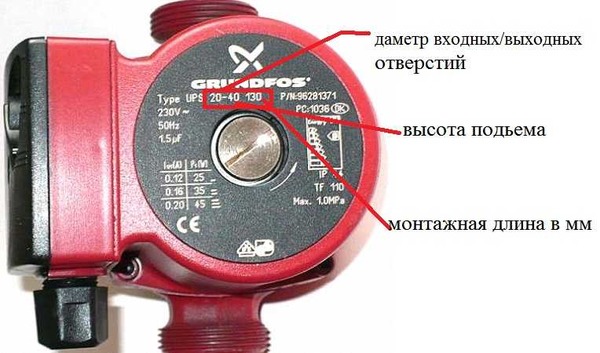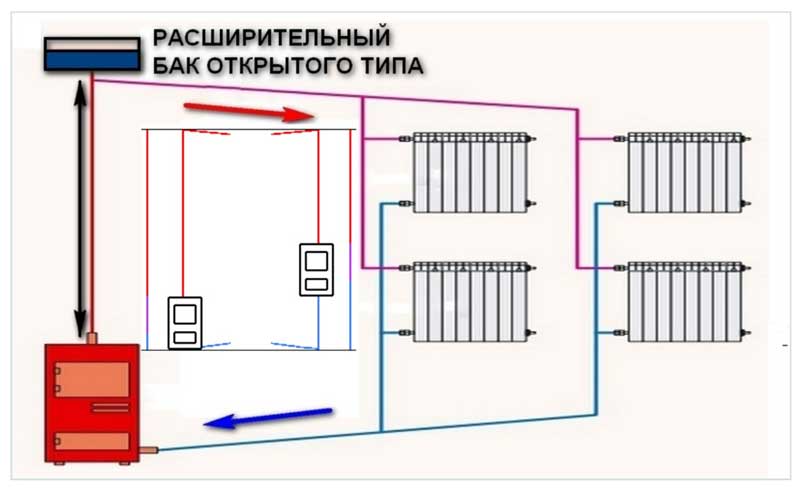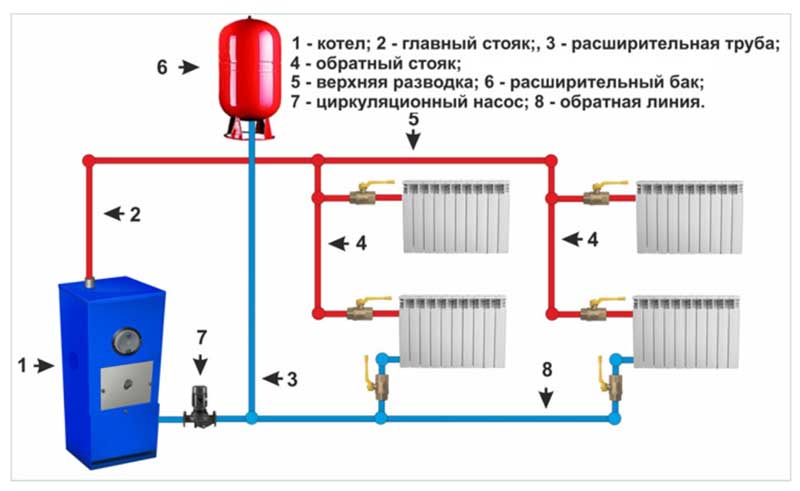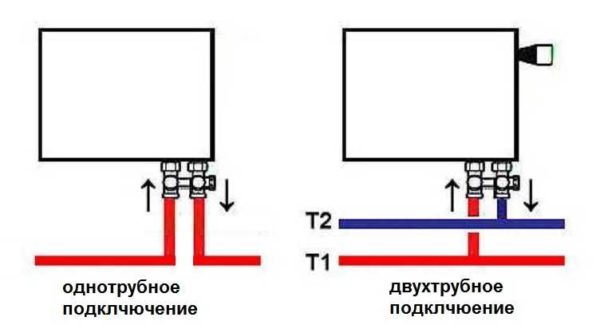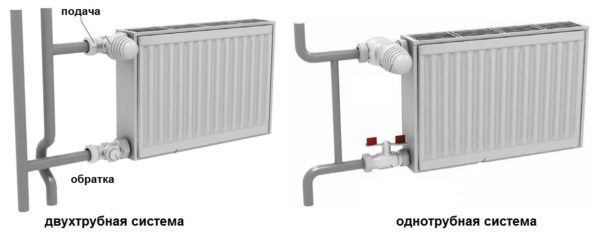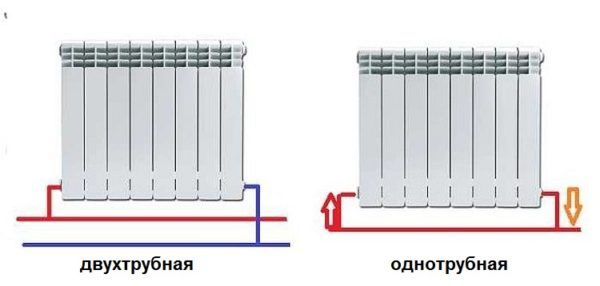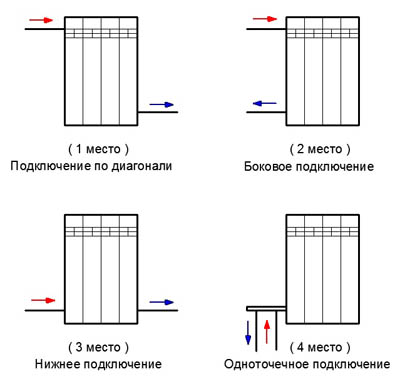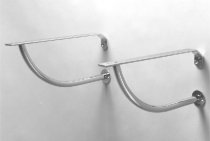Stabilization of pressure in the heating system
The expansion of water as a result of heating is a natural process. In this indicator, the pressure may exceed the critical value, which is unacceptable from the point of view of heating operation. In order to stabilize and reduce pressure on the internal surfaces of pipes and radiators, several heating elements must be installed. Adjusting the heating system in a private house with their help will be much easier and more efficient.
Expansion tank adjustment

It is a steel container divided into two chambers. One of them is filled with water from the system, and air is injected into the second. The pressure value in the air is equal to the normal value in the heating pipes. If this parameter is exceeded, the elastic membrane increases the volume of the water chamber, thereby compensating for the thermal expansion of water.
Before adjusting the differential pressure in the heating system, the condition and setting of the expansion vessel must be checked. You can adjust the pressure in the heating system by purchasing a tank model with the ability to change it in the air chamber. As an additional measure, a pressure gauge is installed to visually check this value.
However, with a significant jump in pressure, this measure will not be enough. So you can adjust the pressure drop in the heating system if it does not exceed a critical value. Therefore, it is recommended to install additional devices.
How to adjust a security group
This group of devices includes the following elements:
-
pressure gauge
. Designed for visual control of the heating system; -
Air vent
. If the water temperature exceeds 100 degrees, the excess steam acts on the valve seat of the device, releasing air out of the pipes; -
Safety valve
. It works in the same way as a water trap, but it is needed to drain excess coolant from pipes.
How to adjust the heating radiator using this unit? Alas, it is designed to prevent emergencies throughout the system. Batteries require a different device.
Mayevsky crane
Structurally, it is similar to a safety valve. A special feature is the small size and the ability to mount on a radiator pipe with a small diameter.
In order to properly adjust the heating batteries, you need to know in which cases the Mayevsky crane is used:
- Elimination of air locks in radiators. By opening the valve, air is released until the coolant flows;
- Setting the parameters of the critical pressure value. In the event of an emergency expansion of water, the valve opens and the pressure in the radiator stabilizes.
The last function is optional and most often not used. This task is best handled by the security team. Proper adjustment of heating in the house should include all of the above elements.
Sequence of actions when adjusting batteries
It should be noted that the adjustment of radiators in centralized heating systems comes down mainly to setting the control devices for a comfortable temperature regime. In autonomous circuits, this process is more time-consuming, because it is required to regulate not only the batteries, but also the boiler. In addition, if several heating devices are connected to a closed heating circuit (one- and two-pipe systems with bottom wiring), it is necessary to achieve a balanced heating circuit.
To solve this problem, at the initial stage, it is necessary to determine the coldest room in the house, because. battery adjustment will begin with it.To do this, all taps are closed, and after the radiators have cooled down, the temperature in each room is measured.
In the found room, the shut-off valve opens completely, and after reaching the required level of heating, they switch to another radiator, adjusting the position of the valve, which ensures a comfortable mode. After all the batteries have been adjusted, they begin to set up the boiler regulators.
There is another (simplified) version. To do this, it is necessary to determine the exact sequence of the location of the radiators in the direction of the coolant. Further, in the first battery, the tap or thermal head is opened, for example, by one or two turns, in the next - by two or three, in the third - by three or four, etc. If the temperature in each room satisfies the needs, the adjustment process is considered complete. Otherwise, the procedure should be repeated, increasing or decreasing the number of turns of the crane.
During the design of the heating system, it is necessary to provide for measures to control temperature and pressure. To do this, you need to install special fittings and devices. How to properly adjust the heating system: batteries, pressure and other elements? First you need to understand the principles of organizing these sections of the system.
The boiler works, but the batteries do not heat why the cold return in the heating system
The heating system is a complex structure consisting of several elements combined into one circuit and is put into operation through a chain reaction.
What is a return flow in a heating system?
The return is a coolant located inside the heating system. During operation, it passes through all heating devices and gives them heat. Then, already cooled, the coolant returns to the boiler, where it is heated and begins a new cycle.
Photo 1. Heating scheme with a circulation pump and an expansion tank. The arrows show the movement of the coolant.
Both ordinary water and antifreeze act as a coolant. It is put into operation either naturally (under the influence of gravity) or forcibly (with the help of a pump).
Causes of return problems in batteries of a private or apartment building
- insufficient water pressure in the system;
- a small section of the pipe through which the coolant passes;
- incorrect installation;
- air pollution or contamination of the system.
If a problem with a cold return has arisen in an apartment, then the first thing you should pay attention to is pressure. This is especially true for rooms on the upper floors.
The fact is that the principle of the return flow is to quickly and continuously run the liquid through the system. And if its speed drops, then the coolant will not have time to push out cold water and the batteries do not heat up.
The main reason for interruptions in the operation of the heating system in a private house is improper installation. Most often this happens when the installation is carried out without the participation of specialists. Being incompetent in this matter, it is quite easy to mix up the supply and return pipes, or choose pipes of the wrong size.
Troubleshooting methods. Why is cleaning necessary?
To understand exactly how to solve the problem, you first need to establish its source. If the batteries become cold due to insufficiently fast water circulation, the installation of a special pump will help in this case. It will regularly push water into the circuit under a certain pressure, thereby not allowing the system to stop or slow down.
If the cause is clogged pipes, then they just need to be cleaned. You can do this in several ways:
- using a water-pulsing mixture;
- with the help of biological products;
- by means of a pneumatic hammer.
In the event of a malfunction due to improper installation of the equipment, contact the wizard.A qualified specialist will certainly understand the problem and fix all the problems. In addition, he will give practical advice and recommendations for the care and operation of the system.
Useful video
Check out the video, which talks about one of the possible problems with the return line - battery contamination.
What problems arise in the apartment due to the cold return
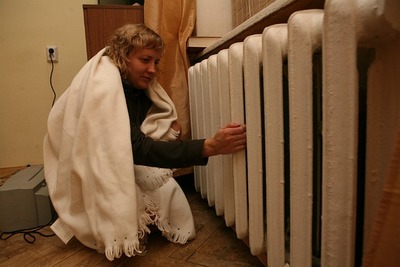
Firstly, the batteries in this case do not heat up properly, or even do not work at all. Accordingly, it becomes cold in the room itself, which certainly does not please.
This entails the accumulation of condensate on the walls of the boiler, which begins to react with carbon dioxide released from the combustion of fuel. The consequence of this process is the formation of acid, which corrodes the walls of the boiler, thereby destroying it.
To live without fires and explosions: how to ground a gas boiler in a private house with your own hands?
What is needed to connect a gas boiler to a gas source?
Do the pipes crackle angrily and heat poorly? It's time to arrange the flushing of the gas boiler and its heat exchanger
Requires extreme caution! Principles of replacing a gas boiler in a private house
Fine-tuning the heating system, accessible to everyone: how to connect a room thermostat to a gas boiler
You can save money, just be careful: do-it-yourself gas boiler repair instructions
This is interesting: How to bend drywall for an arch with your own hands at home: we read in detail
Best Answers
SamTrest:
horizontal - the supply is closer to the wall, the return, respectively, further - this is in the basement, but in the apartment how it will turn out (rules for the development of heating systems)
Solodky Vitaly:
There are no regulations for this! But historically it so happened that on horizontal, sections SUPPLY from above, above RETURN besides with lateral and diagonal connection, the supply always enters the radiator from above, the return from below, with the lower connection through monoblocks, the supply enters the radiator through the left tap, and the return through the right. On vertical sections, the feed can be either on the right or on the left, depending on how it was more convenient to lay down.
The role of the return and its difference from the supply
Sometimes, when doing plumbing work on their own, the user does not know how to determine the supply and return pipe with the battery connected. With complete ignorance of the design, you can use a thermometer, identifying the supply and return pipelines by the temperature difference, if the schemes for removing the coolant to heating radiators are known, considers the following options:
- With diagonal and lateral switching, the feed is always at the top and the return at the bottom.
- In the lower eyeliner, the direction of movement of the inlet and outlet flows is sometimes indicated by arrows on the inlet node (binoculars).
- In "Leningrad", the return is considered to be a pipe extending from the last heating battery in a row.
- In the collector distribution, the feed combs are equipped with adjustable feed sensors in the form of fittings with transparent caps and indicators placed inside, the check valves of the return comb are closed with threaded plugs. Also, the color marking of the direct supply is red, and the return is blue.
Rice. 3 Organization of heating systems using an open expansion tank
The return line plays no less important role than a straight line for supplying media to heat exchangers or heated floors, its purpose and installation methods:
In gravity structures with an open storage tank. The movement of water in open circuits occurs due to the difference in the hydrostatic pressures of the cooled and hot water columns due to the fact that the hot liquid has a lower density.
Therefore, the return line is designed and mounted taking into account the following rules:
- Heat losses in the return must be quite significant to maximize the reduction of water cooling, that is, the batteries must have significant heat dissipation.
- With an increase in the distance from the lower point of the radiators to the inlet pipes of the boiler, the length of the low-temperature column increases and, accordingly, it more effectively displaces the heated coolant. The high location of the boiler from the battery lengthens the section with a cooled return, while at the same time reducing the segment of the high-temperature column - as a result, a large temperature difference shifts the working fluid much further up the contour and heating is more efficient.
- The upper installation of the boiler contradicts the condition under which it must be at a height below the level of the last batteries in the circuit for gravity flow of the carrier into it under a slope. When the boiler is installed low in the basement, in order to ensure normal circulation during installation, slopes towards the heating unit (2 - 3 mm per linear meter) should be observed.
It should be noted that both of the above schemes are working (the latter is used more often) and their choice is related to the convenience of installing boiler equipment in the house.
Rice. 4 Closed type heating system - diagram
In closed circuits with an electric pump. Circular pumps are installed in multi-circuit heating with heated floors, creating the required pressure in the line, in many cases two circulars are used - one pumps water throughout the system, and the second supplies the coolant to the floors or radiator heaters.
With collector wiring, the return temperature relative to the supply plays an important role, the difference should not exceed 10º C, the standard differences are 55 - 45, 50 - 40, 45 - 35, 40 - 30 degrees. To achieve these parameters, the cooled coolant from the return manifold is partially mixed with the hot incoming from the boiler, and then fed into the warm floors.
In the piping of boilers. When the boilers are turned on, the initial difference between the supply and return temperatures is quite significant - this leads to the formation of condensate on the walls of the heating chamber and chimney pipes, which, entering into a chemical reaction with carbon dioxide and other combustion products, causes accelerated corrosion of their surface.
To prevent these negative consequences, a small circuit is created with an adjustable check valve, in which the temperatures of the incoming boiler and the heated coolant quickly equalize. After reaching the set temperature threshold, the thermal valve automatically opens, and the entire system line is connected to the small heating circuit.
Sometimes, in order to equalize the temperature parameters of the supply and return, a bypass jumper of small diameter is installed between them, the width of its passage channel can be adjusted with screw valves (ball valves are used only for completely locking and opening passages).
Pressure, water velocity and return temperature in the heating system
Basically, the requirements for heating systems involve dividing the specifics of heating into two types:
- independent, here the source of heat energy is located directly in the room - they are used in an individual house or in high-rise buildings of an elite type;
- dependent, where a network of pipelines is connected to the heating complex - they are used in most urban areas and urban-type settlements.
According to the specifics of the circulation of the heat carrier, water is mainly used, where the speed of the water in the heating system directly affects the temperature in the radiators. The circulation is divided into natural (according to the principle of gravity) and forced (heating system using a pump). By distribution, it is customary to distinguish between a heating system with lower and upper pipe wiring.
Temperature
Despite the rich selection of heating systems provided, the options for heat supply and return are quite few. The maximum temperature in the heating system must also be set according to the rules in order to avoid further malfunctions.
Radiators are connected to the heating system in one of three ways: bottom, side or diagonal.
Also, the lower connection is also called differently: "Leningrad", saddle. According to this scheme, the return and supply are installed at the bottom of the battery. In most cases, it is used when pipes are laid under the baseboard or under the floor surface. The return temperature in the heating system must not differ from the supply temperature.
Water speed
If there are few sections, heat transfer will be extremely inefficient compared to other schemes - the water velocity in the heating system decreases, which leads to heat loss.
Lateral heating is the most popular type of connection of radiator batteries to heating. Water is supplied as a heat carrier in the upper part, and the return is connected from below, so that the return temperature in the heating system is considered equivalent.
To avoid a decrease in the efficiency of this type of connection with an increase in radiator sections, it is recommended to install an injection tube.
Pressure
The diagonal type of connection is also called the side cross scheme, because the water supply is connected from above the radiator, and the return line is organized at the bottom of the opposite side. It is advisable to use it when connecting a significant number of sections - with a small number, the pressure in the heating system rises sharply, which can lead to undesirable results, that is, heat transfer can be halved.
In order to finally dwell on one of the options for connecting radiator batteries, it is necessary to be guided by the method of organizing the return. It can be of the following types: single-pipe, two-pipe and hybrid.
Which option is worth choosing will depend on a combination of factors. It is necessary to take into account the number of storeys of the building where the heating is connected, the requirements for the price equivalent of the heating system, what type of circulation is used in the coolant, the parameters of the radiator batteries, their dimensions, and much more.
Most often, they stop their choice precisely on a single-pipe wiring diagram for heating pipes.
As practice shows, such a scheme is used precisely in high-rise buildings of the modern type.
Such a system has a number of characteristics: they are low cost, easy to install, the coolant (hot water) is supplied from above when choosing a vertical heating system.
Also, radiators are connected to the heating system in series, and this, in turn, does not require a separate riser for organizing the return. In other words, water, having passed the first radiator, flows into the next, then into the third, and so on.
However, there is no way to regulate the uniform heating of radiator batteries and its intensity, they constantly record a high pressure of the coolant. The farther the radiator is installed from the boiler, the more heat transfer decreases.
There is also another wiring method - a 2-pipe scheme, that is, a heating system with a return. It is most often used in luxury housing or in an individual home.
Here is a pair of closed circuits, one of them is intended for supplying water to batteries connected in parallel, and the second for its removal.
With hybrid wiring, the two schemes described above are combined. This may be a collector circuit, where an individual wiring branch is organized at each level.
Return flow in the heating system, its purpose
The return in the heating system is the coolant that has passed through all the heating radiators, lost its primary temperature and is already cold and is fed into the boiler for the next heating. The coolant can move both in a two-pipe and in an improved one-pipe heating system.
A single-pipe heating system implies a sequence of connections for heating radiators. That is, the supply pipe is connected to the first radiator, from which the next pipe goes to the second radiator, and so on.
If a single-pipe heating system is improved, then its design will be something like this: there is one pipe along the perimeter of the entire room, into which you can insert the supply and return pipes of each radiator. In this case, it is possible to install a control valve on each battery, with which you can very successfully regulate the air temperature in a given room.
A big plus of such a heating system is the minimum number of pipes in it. And the minus is the temperature difference between the first radiator from the boiler and the last one. This problem can be eliminated with the help of a circulation pump, which will drive all the water through the system and heating much faster, and thus the coolant will not have time to lower the temperature.
A two-pipe heating system is a wiring of two pipes. One pipe is the supply of hot coolant, the second pipe is the return pipe in the heating system, through which the already cooled water from the radiators enters the boiler. Such a system allows almost parallel connection of all radiators, which makes it possible to flexibly configure each radiator separately without affecting the operation of the others.
Consequences of a cold return
Scheme for heating the return
Sometimes, with an incorrectly designed project, the return flow in the heating system is cold. As practice shows, that the room does not receive enough heat during a cold return, this is still half the trouble. The fact is that at different supply and return temperatures, condensate can form on the walls of the boiler, which, when interacting with carbon dioxide released during the combustion of fuel, forms acid. She then can disable the boiler much ahead of time.
To avoid this, it is necessary to carefully consider the design of the heating system, special attention must be paid to such a nuance as the return temperature in the heating system. Or include additional devices in the system, for example, a circulation pump or a boiler, which will compensate for the loss of warm water
Radiator connection options
Now we can more than confidently say that when designing a heating system, the supply and return must be ideally thought out and configured. With the wrong design of the heating system, more than 50% of the heat can be lost.
There are three options for inserting a radiator into a heating system:
- Diagonal.
- Lateral.
- Lower.
The diagonal system gives the highest efficiency and is therefore more practical and efficient.
The diagram shows a diagonal inset
How to regulate the temperature in the heating system?
In order to adjust the radiator temperature and reduce the difference between the flow and return temperatures, a heating system temperature controller can be used.
When installing this device, do not forget about the jumper, which must be in front of the heater. In the absence of it, you will regulate the temperature of the batteries not only in your room, but throughout the riser. It is unlikely that the neighbors will be delighted with such actions.
The simplest and cheapest version of the regulator is the installation of three valves: on the supply, on the return and on the jumper. If you cover the valves on the radiator, the jumper must be open.
There is a huge abundance of different thermostats that can be used in apartment buildings and private homes. Among the wide variety, each consumer can choose for himself a regulator that will suit him in terms of physical parameters and, of course, in terms of cost.
Adjustment of heat supply what methods to use
During heating operation, the coolant in the system heats up and expands, that is, it increases in volume. That is why the owner sometimes needs to adjust heating batteries in your private house, thereby controlling the work of heat supply. There are several types of devices that allow you to do this job. All devices are usually divided into two categories:
- 1.
regulating; - 2.
controlling.
The former allow you to adjust the pressure and temperature in the system, reduce these parameters up or down. They can be installed in separate sections of the pipeline and used to regulate individual parts of the network, or regulate the operation of the entire system as a whole. Control devices are all kinds of thermometers and pressure gauges installed separately from the control means in systems or together with them. They allow you to get information about the operation of heat supply at any time and decide on the need to configure it.
So that during the operation of heating with its adjustment there are no difficulties, when designing engineering, it is necessary to provide for:
- installation of thermometers and pressure gauges before and after the heating boiler, in distribution collectors (in the lowest and highest parts of the network);
- installation of a pressure gauge before the circulation pump, if it is present in the system;
- installation of an expansion tank: leaky - in open networks and membrane - in closed ones;
- installation of safety valves and air vents necessary to prevent pressure increase in pipes to critical values.
During normal operation of the system, the water temperature in the pipes should not exceed 90 degrees, and the pressure should be in the range of 1.5-3 atmospheres. Some heating networks can operate at higher temperatures and pressures, but they use special elements that are not available in a standard home heating supply. The impossibility of adjusting the battery with a conventional thermostat may indicate the formation of an airlock. To eliminate it, you will have to use the Mayevsky crane.
Radiator connection diagrams
How well the radiators will heat up depends on how the coolant is supplied to them. There are more and less effective options.
Radiators with bottom connection
All heating radiators have two types of connection - side and bottom. There can be no discrepancies with the lower connection. There are only two pipes - inlet and outlet. Accordingly, on the one hand, a coolant is supplied to the radiator, on the other hand it is discharged.
Lower connection of heating radiators with one-pipe and two-pipe heating systems
Specifically, where to connect the supply, and where the return is written in the installation instructions, which must be available.
Radiators with side connection
With a lateral connection, there are much more options: here the supply and return pipelines can be connected to two pipes, respectively, there are four options.
Option number 1. Diagonal connection
Such a connection of heating radiators is considered the most effective, it is taken as a standard, and this is how manufacturers test their heaters and the data in the passport for thermal power - for such an eyeliner. All other connection types are less efficient at dissipating heat.
Diagonal connection diagram for heating radiators with a two-pipe and one-pipe system
This is because when the batteries are connected diagonally, the hot coolant is supplied to the upper inlet on one side, passes through the entire radiator and exits from the opposite, lower side.
Option number 2. Unilateral
As the name implies, pipelines are connected on one side - supply from above, return - from below. This option is convenient when the riser passes to the side of the heater, which is often the case in apartments, because this type of connection usually prevails. When the coolant is supplied from below, such a scheme is used infrequently - it is not very convenient to arrange pipes.
Lateral connection for two-pipe and one-pipe systems
With this connection of radiators, the heating efficiency is only slightly lower - by 2%. But this is only if there are few sections in the radiators - no more than 10. With a longer battery, its farthest edge will not heat up well or even remain cold. In panel radiators, to solve the problem, flow extensions are installed - tubes that bring the coolant a little further than the middle. The same devices can be installed in aluminum or bimetallic radiators, while improving heat transfer.
Option number 3. Bottom or saddle connection
Of all the options, the saddle connection of heating radiators is the most inefficient. Losses are approximately 12-14%. But this option is the most inconspicuous - the pipes are usually laid on the floor or under it, and this method is the most optimal in terms of aesthetics. And so that the losses do not affect the temperature in the room, you can take a radiator a little more powerful than required.
Saddle connection of heating radiators
In systems with natural circulation, this type of connection should not be done, but if there is a pump, it works well. In some cases, even worse than the side. Just at some speed of movement of the coolant, vortex flows arise, the entire surface heats up, and heat transfer increases. These phenomena have not yet been fully studied, therefore it is still impossible to predict the behavior of the coolant.
The comfort of the family in the winter will depend on how efficiently the heating system works in the house.
If the batteries do not heat up well, it is necessary to fix the problem, and for this it is important to know how the heating works in general
Water space heating is a source of heat and a coolant that is distributed through the batteries. Supply and return is present in one- and two-pipe systems. In the second, there is no clear distribution, it is conventionally customary to divide the pipe in half.

